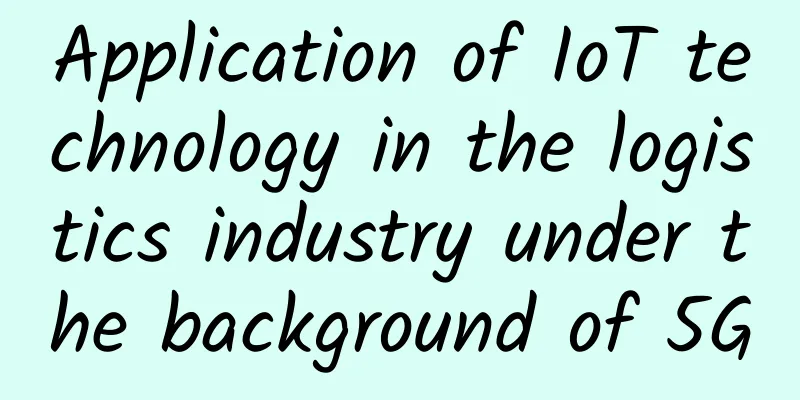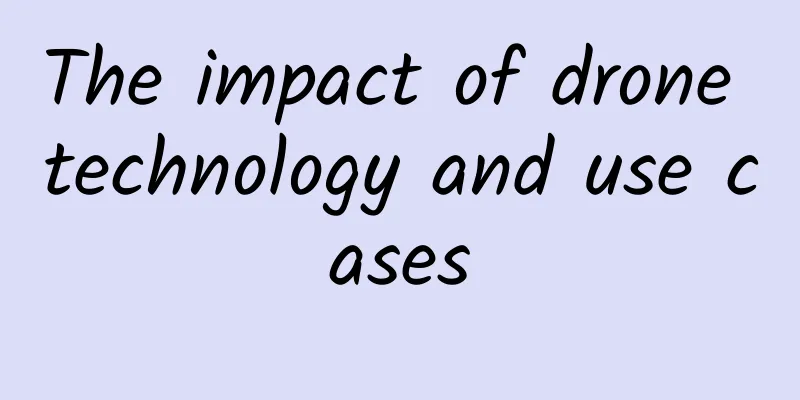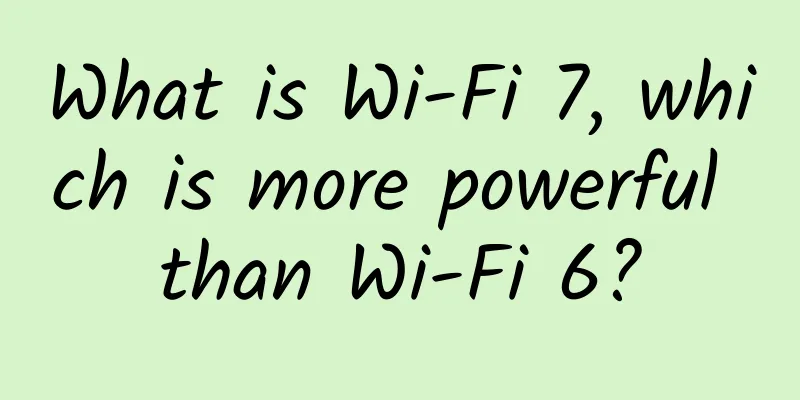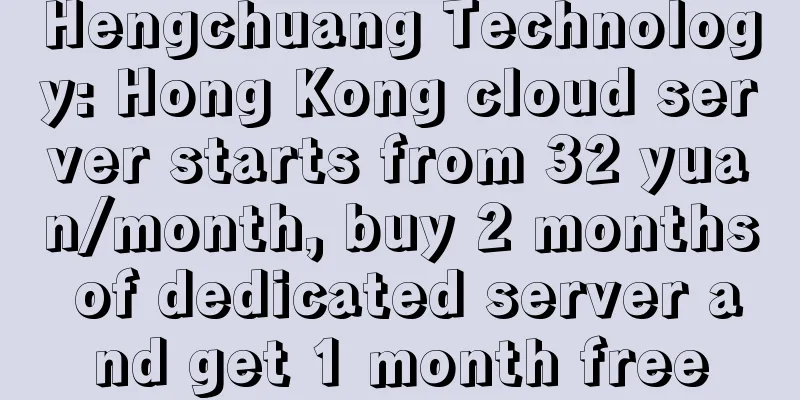How to implement message communication elegantly?

|
This article is reprinted from the WeChat public account "Full Stack Immortal Path", written by semlinker. Please contact the Full Stack Immortal Path public account for reprinting this article. 1. Background As a web developer, you often encounter message communication scenarios in your daily work. For example, you can implement communication between components, between plug-ins, and between different systems. So how should we implement message communication in these scenarios? In this article, Brother Abao will show you how to implement message communication elegantly. Half a month passed, Xiao Qin and Xiao Wang found Brother Abao one after another, saying that they had almost finished learning the TS articles on the "Full Stack Cultivation Road" blog, and when they were free, they would check the "Full Stack Cultivation Road" blog to see if there were any new TS articles. They thought it was quite troublesome, and wanted to see if Brother Abao could notify them after he published a new TS article. How could Abao refuse the suggestions from his friends? So he told them separately: "I will add a subscription function to the blog. After the function is released, please fill in your email address. When you publish new TS articles in the future, the system will send you emails in time." The new process is shown in the figure below: After Abao's "operation", the subscription function of the blog was launched. Abao immediately notified Xiaoqin and Xiaowang and asked them to fill in their respective email addresses. After that, whenever Abao published a new TS article, they would receive a new email notification. Abao is a tech geek who is very interested in new technologies. After meeting Deno, Abao became passionate about learning Deno and started a new Deno topic. After writing several articles on Deno, two readers, Xiaochi and Xiaoguo, contacted me separately, saying that they had seen Abao's Deno articles and wanted to learn Deno with him. After understanding their situation, Brother Abao suddenly thought of the suggestions made by Xiaoqin and Xiaowang. Therefore, after another round of "operation", Brother Abao added a special topic subscription function to his blog. After the function was launched, Brother Abao contacted Xiaochi and Xiaoguo in time and invited them to subscribe to the Deno special topic. After that, Xiaochi and Xiaoguo also became subscribers of Brother Abao's blog. The current process becomes like this: This example looks simple, but it is related to some design ideas and design patterns. Therefore, I will analyze the relevance of the above three scenarios with some design ideas and design patterns in software development. 2. Scenarios and Modes 2.1 Message Polling Mode In the first scenario, in order to view the new TS articles published by Brother Abao, Xiao Qin and Xiao Wang need to constantly visit the blog "Full Stack Cultivation Road": This scenario is similar to the polling mode in the software development process. In the early days, many websites used polling to implement push technology. Polling means that the browser sends HTTP requests to the server at regular intervals, and then the server returns the latest data to the client. Common polling methods are divided into polling and long polling. The difference between them is shown in the following figure: This traditional model has obvious disadvantages, that is, the browser needs to continuously send requests to the server. However, HTTP requests and responses may contain long headers, of which the truly valid data may be only a small part, so this will consume a lot of bandwidth resources. In order to solve the above problems, HTML5 defines the WebSocket protocol, which can better save server resources and bandwidth, and can communicate in more real time. WebSocket is a network transmission protocol that enables full-duplex communication over a single TCP connection and is located at the application layer of the OSI model. The WebSocket protocol was standardized by the IETF as RFC 6455 in 2011 and later supplemented by RFC 7936. Now that we have mentioned the OSI (Open System Interconnection Model) model, here is a diagram that vividly and vividly describes the OSI model: (Image source: https://www.networkingsphere.com/2019/07/what-is-osi-model.html) WebSocket makes data exchange between clients and servers easier, allowing the server to actively push data to the client. In the WebSocket API, the browser and the server only need to complete a handshake to create a persistent connection between the two and perform two-way data transmission. After introducing the relevant content of polling and WebSocket, let's take a look at the difference between XHR Polling and WebSocket: For XHR Polling and WebSocket, they correspond to two modes of message communication, namely Pull mode and Push mode: We have introduced scenario 1 here. Friends who are interested in polling and WebSocket can read the article "You don't know WebSocket" written by Abao. Now let's continue to analyze the second scenario. 2.2 Observer Pattern In the second scenario, in order to allow Xiao Qin and Xiao Wang to receive the newly released TS articles from Brother Abao in a timely manner, Brother Abao added a subscription function to his blog. Here, it is assumed that Brother Abao's blog only published articles on the TS topic at the beginning. For this scenario, we can consider using the observer pattern in the design pattern to implement the above functions. The observer pattern defines a one-to-many relationship, allowing multiple observer objects to monitor a subject object at the same time. When the state of the subject object changes, it will notify all observer objects so that they can automatically update themselves. There are two main roles in the observer pattern: Subject and Observer. In the second scenario, the Subject is Abaoge's TS special article, and the observers are Xiaoqin and Xiaowang. Since the observer pattern supports simple broadcast communication, when the message is updated, all observers will be automatically notified. Therefore, for the second scenario, we can consider using the observer design pattern to implement the above functions. Next, let's continue to analyze the third scenario. 2.3 Publish-Subscribe Model In the third scenario, in order to allow Xiaochi and Xiaoguo to receive the newly released Deno articles from Brother Abao in time, Brother Abao added a special subscription function to his blog, which supports pushing newly released TS or Deno articles to subscribers of Brother Abao's blog. For this scenario, we can consider using the publish-subscribe model to implement the above functions. In software architecture, publish-subscribe is a messaging paradigm where the sender of a message (called a publisher) does not send the message directly to a specific receiver (called a subscriber). Instead, the published messages are divided into different categories and then sent to different subscribers. Similarly, subscribers can express interest in one or more categories and only receive messages of interest without knowing which publishers exist. There are three main roles in the publish-subscribe model: Publisher, Channels, and Subscriber. In the third scenario, the publisher is Abao, Topic A and Topic B in Channels correspond to TS and Deno, respectively, and the subscribers are Xiaoqin, Xiaowang, Xiaochi, and Xiaoguo. Now that we have understood the publish-subscribe model, let's introduce some of its application scenarios. 3. Application of publish-subscribe model 3.1 Message communication between modules/pages in the front-end framework Some mainstream front-end frameworks also provide components for communication between modules or pages. For example, in the Vue framework, we can create an EventBus component through new Vue(). In Ionic 3, we can use the Events component in the ionic-angular module to implement message communication between modules or pages. Let's introduce how to implement message communication between modules/pages in Vue and Ionic respectively. 3.1.1 Vue uses EventBus for message communication In Vue, we can create EventBus to implement message communication between components or modules. It is very simple to use. The figure below contains two Vue components: Greet and Alert. The Alert component is used to display messages, and the Greet component contains a button, which is the "Show Greet Message" button in the figure below. When the user clicks the button, the Greet component will pass the message to the Alert component through EventBus. After receiving the message, the component will call the alert method to display the received message. The code corresponding to the above example is as follows: main.js
Alert.vue
Greet.vue
3.1.2 Ionic uses Events components for message communication In the Ionic 3 project, it is very simple to implement message communication between pages. We just need to inject the Events component provided by the ionic-angular module through construct injection. The specific usage example is as follows:
After introducing the application of the publish-subscribe model in Vue and Ionic frameworks, Abao will introduce how this model implements plug-in communication in the microkernel architecture. 3.2 Plugin Communication in Microkernel Architecture Microkernel Architecture, sometimes also called Plug-in Architecture, is a functionally split extensible architecture, commonly used to implement product-based applications. The microkernel architecture pattern allows you to add other application functions as plug-ins to the core application, thereby providing extensibility and functional separation and isolation. The microkernel architecture pattern includes two types of architecture components: core system and plug-in modules. The application logic is divided into independent plug-in modules and core system, providing scalability, flexibility, functional isolation and custom processing logic. The core system design of the microkernel involves three key technologies: plug-in management, plug-in connection and plug-in communication. Here we focus on analyzing plug-in communication. Plugin communication refers to the communication between plugins. Although plugins are completely decoupled during design, in actual business operation, a business process will inevitably require the collaboration of multiple plugins, which requires communication between two plugins. Since there is no direct connection between plugins, communication must go through the core system, so the core system needs to provide a plugin communication mechanism. This situation is similar to a computer. The CPU, hard disk, memory, and network card of a computer are independently designed configurations. However, when the computer is running, there must be communication between the CPU and memory, and between the memory and the hard disk. The computer provides communication functions between these components through the bus on the motherboard. Next, I will take the Xigua player designed based on the microkernel architecture as an example to introduce how it provides a plug-in communication mechanism. Inside the Xigua player, a Player class is defined to create a player instance:
The Player class inherits from the Proxy class, and the EventEmitter event dispatcher is inherited by constructing the Proxy class:
Therefore, the watermelon player we created is also an event dispatcher, which can be used to realize the communication of plug-ins. In order to help everyone better understand the specific communication process, we take the built-in poster plug-in as an example to see how it uses the event dispatcher internally. The poster plug-in is used to display a poster image before the player plays audio or video. The usage of this plug-in is as follows:
The corresponding source code of the poster plug-in is as follows:
(https://github.com/bytedance/xgplayer/blob/master/packages/xgplayer/src/control/poster.js) By observing the source code, we can see that when registering the poster plug-in, the player instance will be injected into the plug-in. After that, the player event dispatcher will be used inside the plug-in to listen to the player's play and destroy events. When the poster plug-in listens to the player's play event, it will hide the poster image. When the poster plug-in listens to the player's destroy event, it will perform cleanup operations, such as removing the bound events. It is clear to us that Watermelon Player uses EventEmitter to provide a plug-in communication mechanism. Each plug-in will be injected with the global event dispatcher player, through which communication between plug-ins can be easily achieved. Speaking of EventEmitter, I believe many friends are familiar with it. In Node.js, there is a built-in module called events, through which we can easily implement a custom event dispatcher, such as:
3.3 Realizing communication between different systems based on Redis Earlier, we introduced the application of the publish-subscribe model in a single system. In fact, in the daily development process, we will also encounter the problem of communication between different systems. Next, Abaoge will introduce how to use the publish and subscribe function provided by Redis to achieve communication between systems. However, before introducing the specific application, we must first be familiar with the publish and subscribe function provided by Redis. 3.3.1 Redis publish and subscribe functions Redis subscription function Through Redis's subscribe command, we can subscribe to the channel of interest. The syntax is: SUBSCRIBE channel [channel ...].
In the above command, we subscribe to the deno and ts channels through the subscribe command. Next, we open a new command line window to test the publishing function of Redis. Redis publish function Through Redis's publish command, we can publish messages to the specified channel. The syntax is: PUBLISH channel message.
When the message is successfully published, the client subscribed to the channel will receive the message, and the corresponding console will output the following information:
After understanding the publish and subscribe functions of Redis, Brother Abao will introduce how to use the publish and subscribe functions provided by Redis to achieve communication between different systems. 3.3.2 Realizing communication between different systems Here we use the Node.js Express framework and the redis module to quickly build different web applications. First, create a new web project and install the relevant dependencies:
Next, create a publisher application: publisher.js
Then create two subscriber applications: subscriber-1.js
subscriber-2.js
Then start the above three applications respectively. When all applications are successfully started, visit the address http://localhost:3005/ in the browser. At this time, the terminals corresponding to the above two subscriber applications will output the following information respectively: subscriber-1.js
subscriber-2.js
The communication flow corresponding to the above example is shown in the following figure: The application scenarios of the publish-subscribe model have been introduced here. Finally, Brother Abao will introduce how to use TS to implement an EventEmitter component that supports publish and subscribe functions. 4. Publish and Subscribe Model Practice 4.1 Defining the EventEmitter Class
4.2 Usage Examples
After the above code runs successfully, the console will output the following information:
Receive subscribed messages: TypeScript publish-subscribe pattern 5. Reference Resources Wikipedia - Publish/Subscribe Ionic 3 - Events implementing-redis-pub-sub-in-node-js-application |
<<: 5G brings edge cloud services to the forefront
Recommend
[11.11] Megalayer: 50% off on regular VPS, Hong Kong/Philippines/US VPS starting at 159 yuan per year
Megalayer also launched a promotion for the Doubl...
The development trend of enterprise-level wireless coverage (WiFi6)
[[402903]] 1. Trends in enterprise-level wireless...
Whose encryption key is hardcoded in the code?
System design, protocol first. Most people do not...
Huawei's Eric Xu: Working with operators to create an agile and user-friendly B2B private line service
[Hangzhou, China, October 18, 2017] Today, the 4t...
Looking back at the journey of Huawei's ICT ecosystem, I would like to give a thumbs up to the partners who have jointly built a prosperous ecosystem!
In June, although the "Huawei China ICT Ecos...
The Experience Economy is in Full Swing: Aruba Drives the Intelligent Digital Workplace
Under the wave of mobility and digitalization, th...
Why is C-band spectrum important for 5G?
1. Introduction Synchronization is one of the mos...
China Mobile Capital leads the investment in Unisplendour Cloud, completes 600 million yuan financing and focuses on the government and enterprise market
On September 15, Unisplendour Cloud Technology Co...
Wu Jiangxing, Academician of the Chinese Academy of Engineering: 6G networks must address generalized functional safety
Recently, the Future Mobile Communications Forum ...
Explore different VGG networks. What do you discover?
1 Question Explore different VGG networks. 2 Meth...
Ready to use right out of the box? StreamNative Platform 1.0 is now available
Recently, StreamNative solemnly announced the rel...
Huawei releases SD-WAN private line solution to build enterprise wide area interconnection with ultimate experience
At HUAWEI CONNECT 2017, Huawei released the SD-WA...
Alibaba Cloud Double 11 Carnival: Cloud server annual payment starts from 85 yuan, cloud database starts from 19.9 yuan/year, com domain name starts from 23 yuan
When talking about domestic cloud server manufact...
What is CDN = The Mysterious Embarrassment of CDN | The Most Fearful Thing is the Air Suddenly Going Quiet
The road to advanced popular science of the obscu...
Cloud computing in 2018: Switch or die
Cloud computing technology is creating a new and ...









